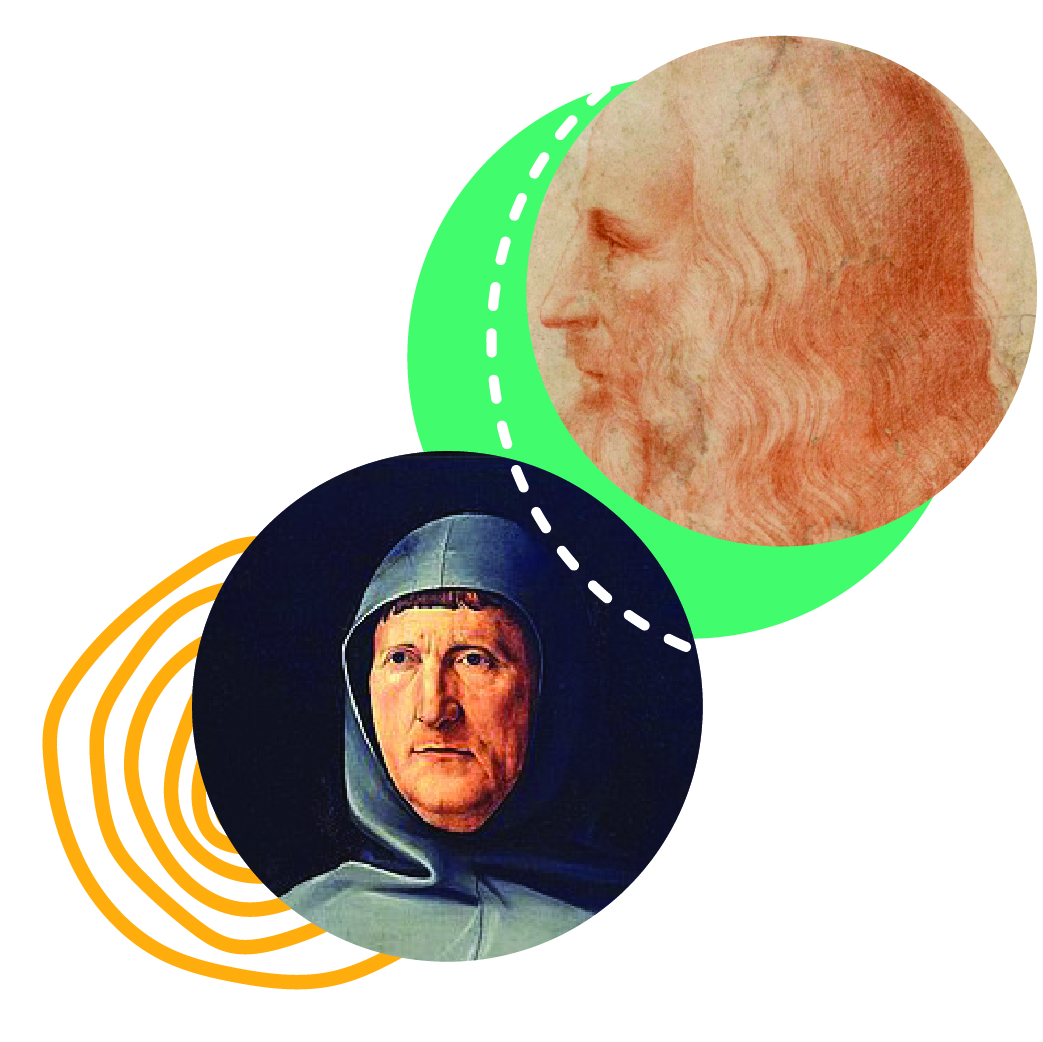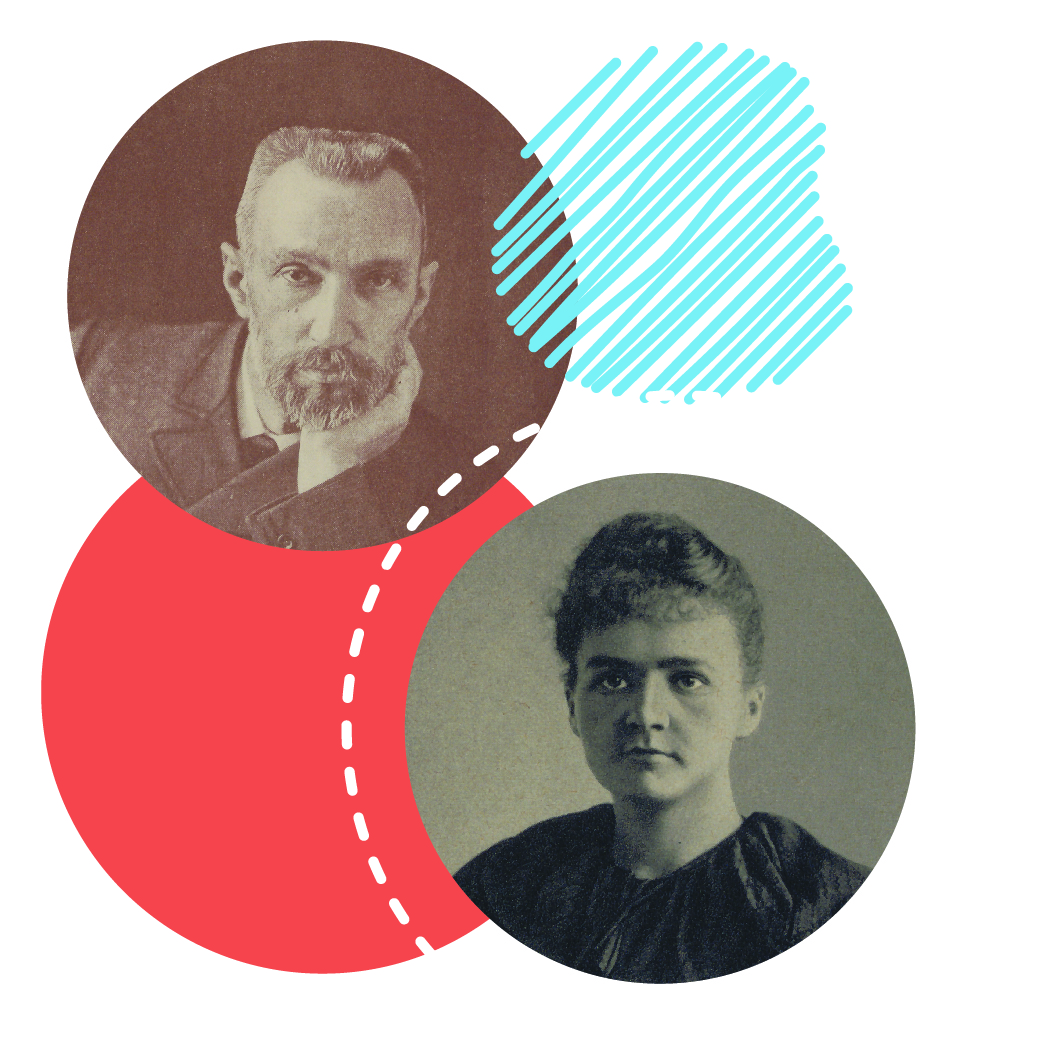
Innovation Through Collaboration
Acclaimed historian, journalist, and biographer Walter Isaacson was the 2022 Mary S. Stern Lecturer, opens a new window which occurred on October 6 at the Aronoff Center for the Arts.
Issacson has chronicled transformative ideas and innovative partnerships of Steve Jobs, opens a new window, Albert Einstein, opens a new window, Benjamin Franklin, opens a new window, and Leonardo da Vinci, opens a new window. In celebration of the Stern Lecture, materials from CHPL’s Rare Books Collection will be on display highlighting three such historic scientific partnerships.
Explore by Innovators
De Divina Proportione
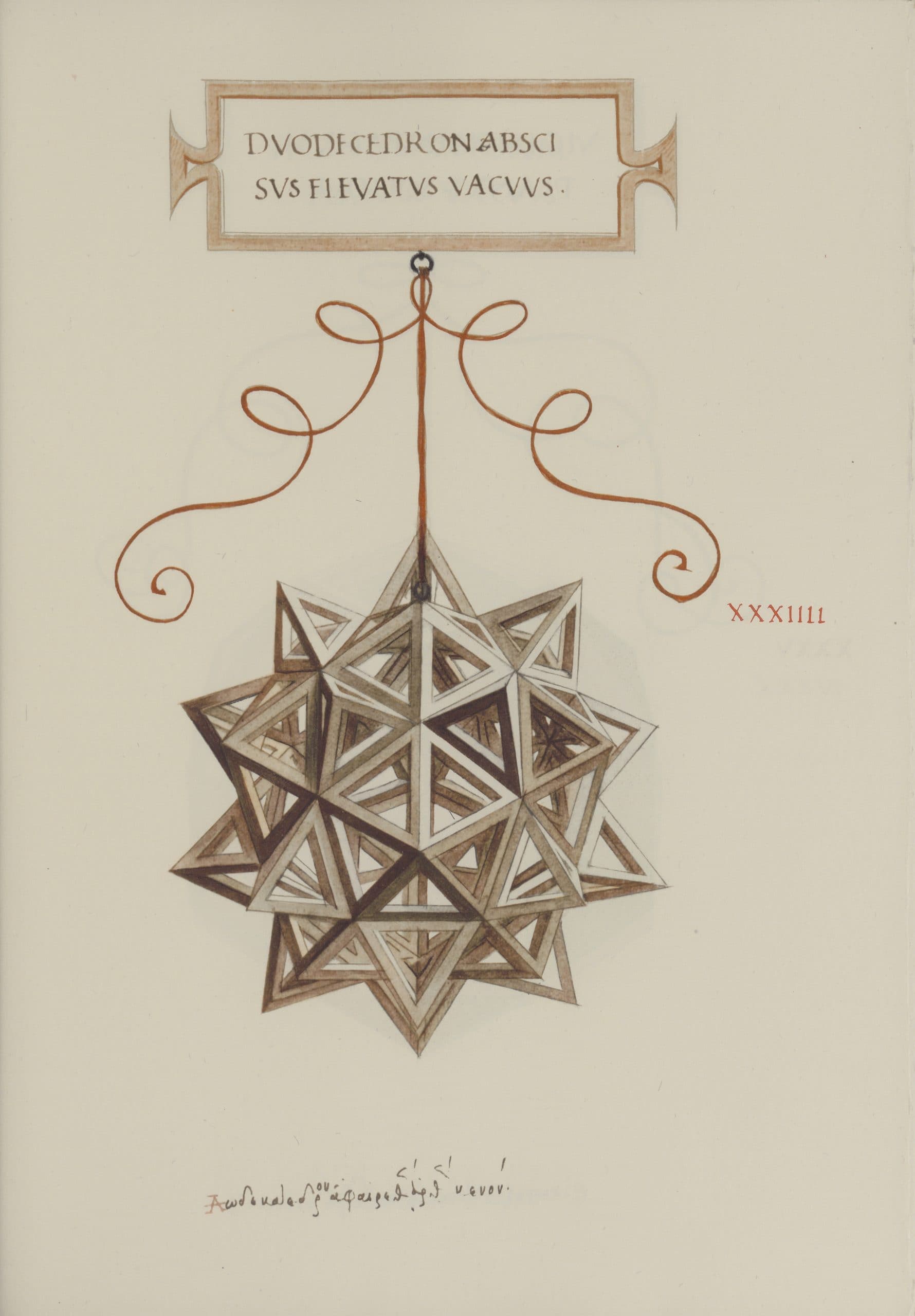
De Divina Proportione is a study of the golden ratio, or divine proportion, a term first coined by Pacioli, and a formula first studied by ancient mathematician Euclid in 300 B.C. It represents the relationship that occurs when you divide a line into two parts in such a way that the ratio between whole length and the longer part is equal to the ratio between the longer part and the shorter part [ a : b = b : (a + b) ], yielding an irrational number, approximately 1.618.
The CHPL collection contains a facsimile or exact copy of a portion of the original first printing of De Divina Proportione, published in 1509 and held by Biblioteca Ambrosiana in Milan, Italy - one of only two that remain in the world. Printed in 1956, this copy is number 206 of the only 280 designated for this particular edition.
Da Vinci’s illustrations not only apply the proportion, but do so by using a method and perspective that had never been done before. Part of da Vinci’s genius was that he could visualize the shapes in his mind as three-dimensional objects, then translate them to the page.
In addition to solid drawings of the shapes, he also provides a corresponding “vacua” or hollow version, constructed as if made of wooden beams. The empty faces enable one to see through to the rear surfaces, revealing which solid edges belong to the front and which to the back, thus making them more comprehensible.
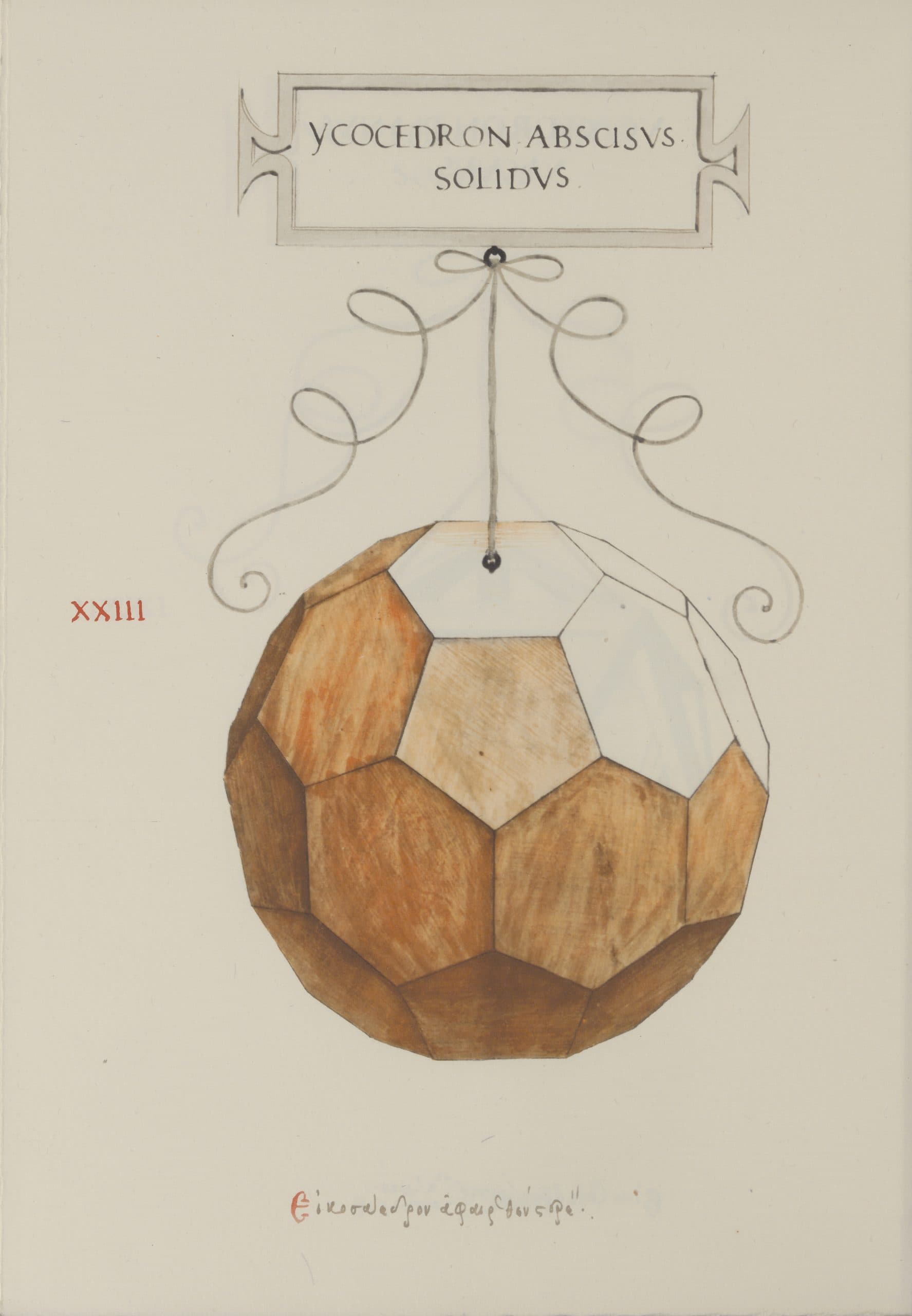
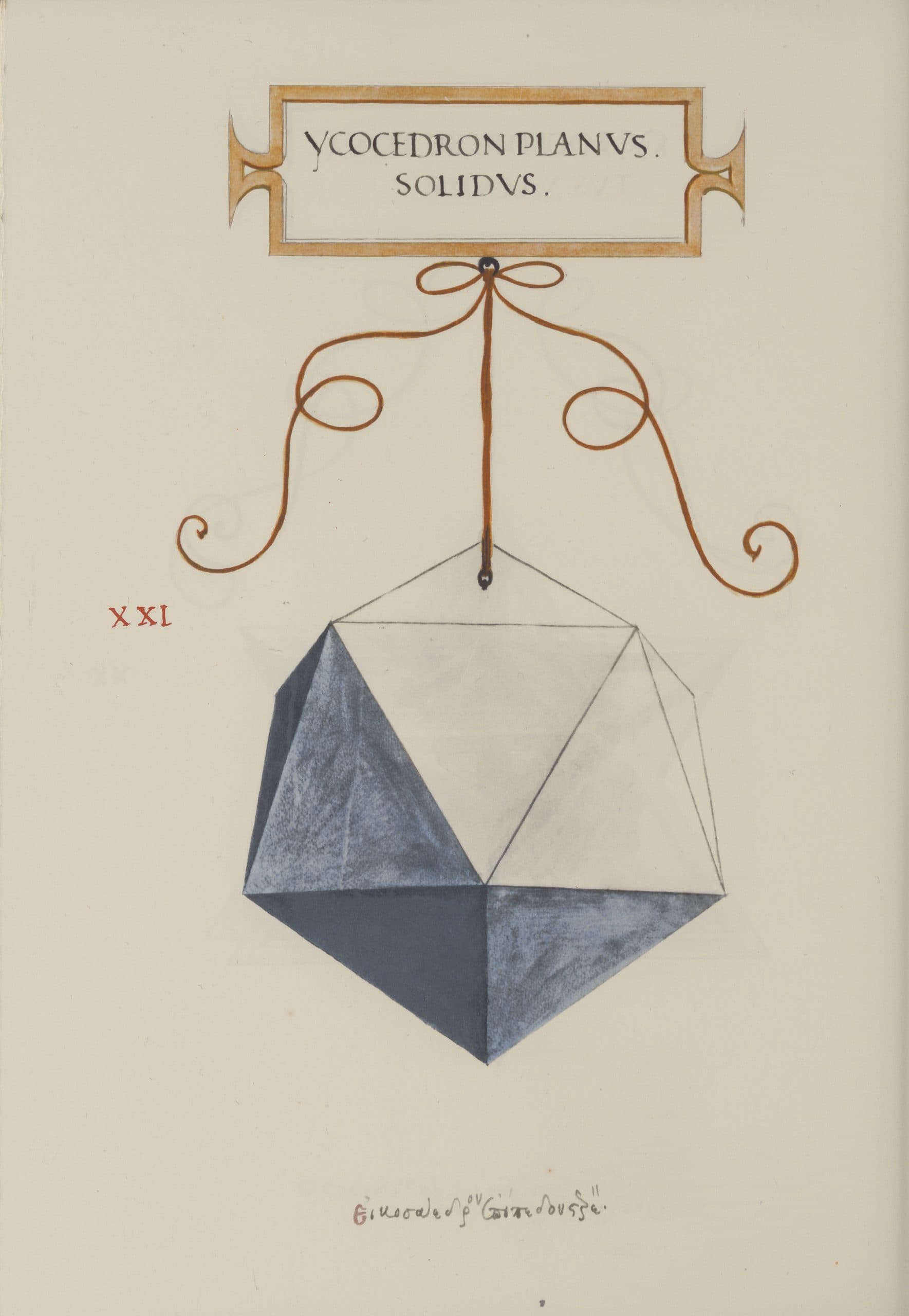

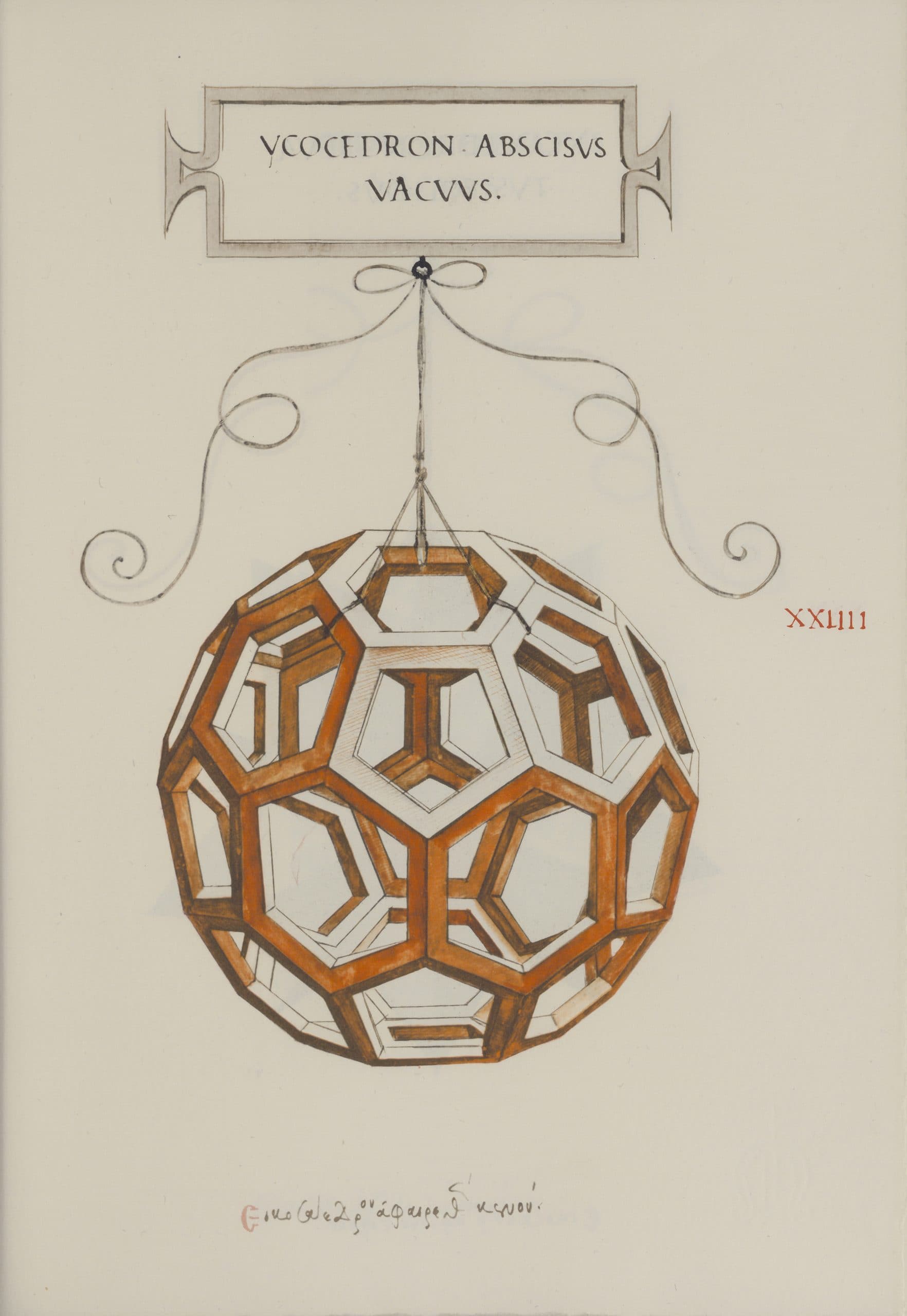
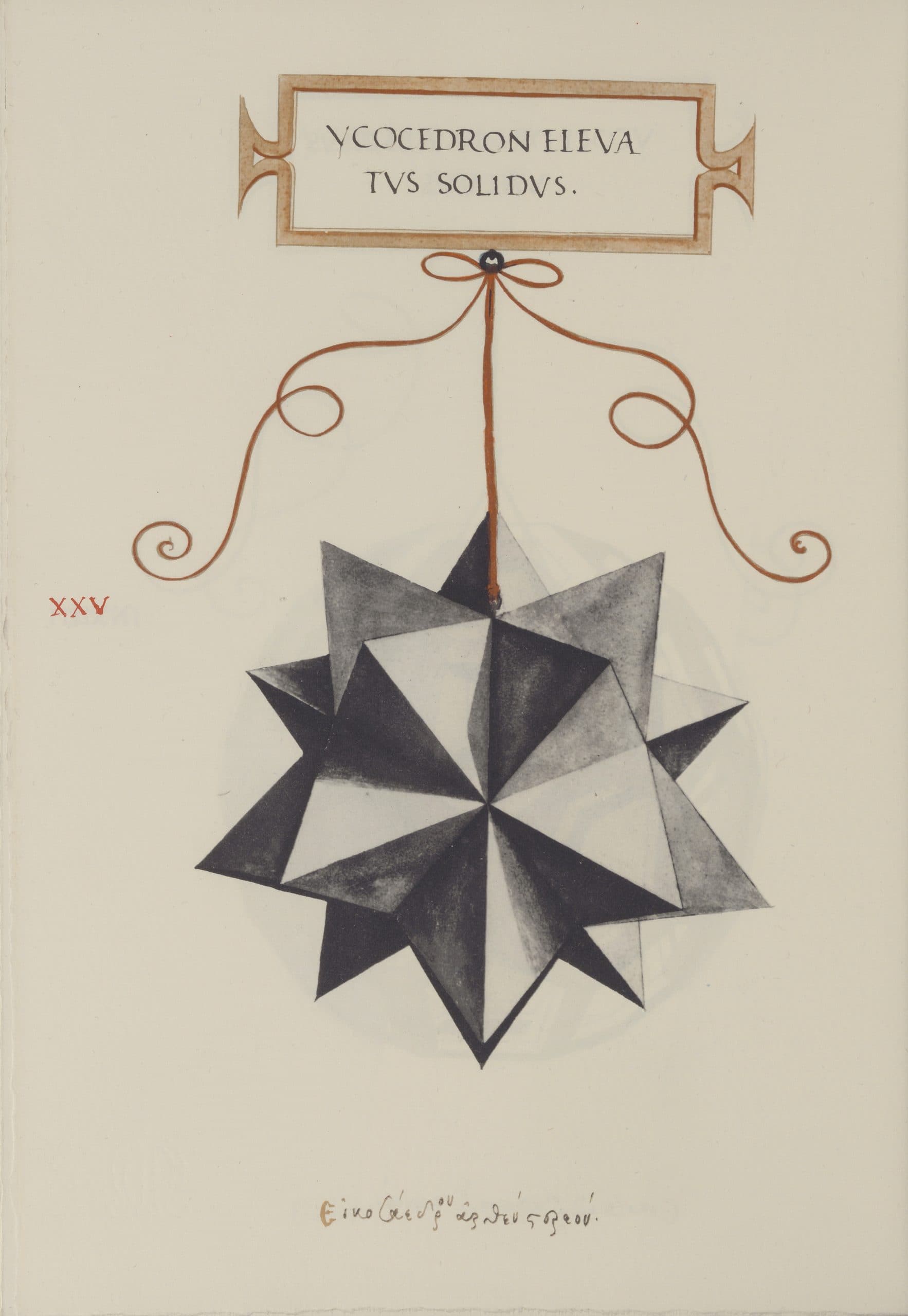
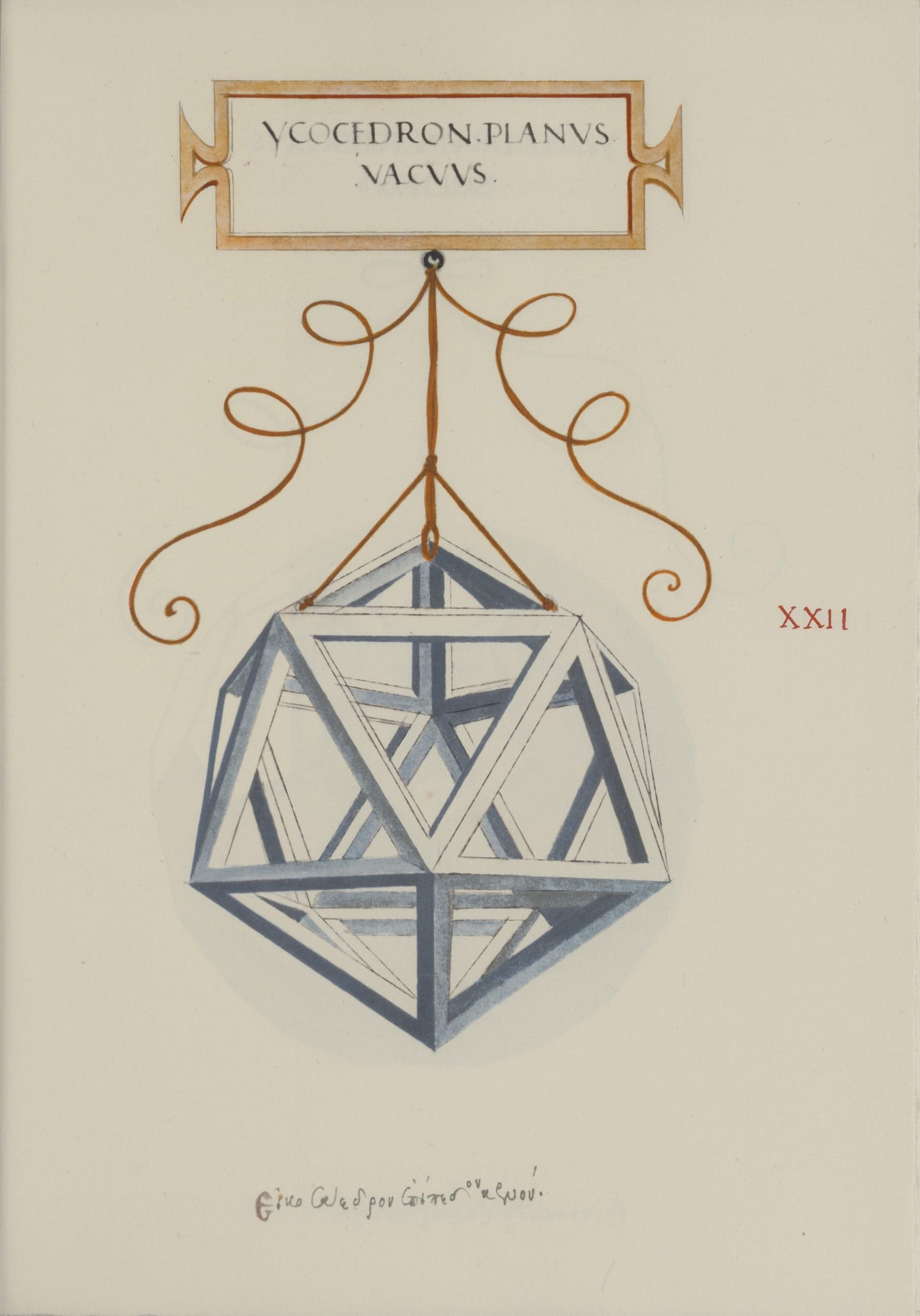
“Proportion is not only to be found in number and measure, but also in sounds, weights, times, and places and every force that exists.” - Leonardo da Vinci
Atlas: A Geography of the Heavens
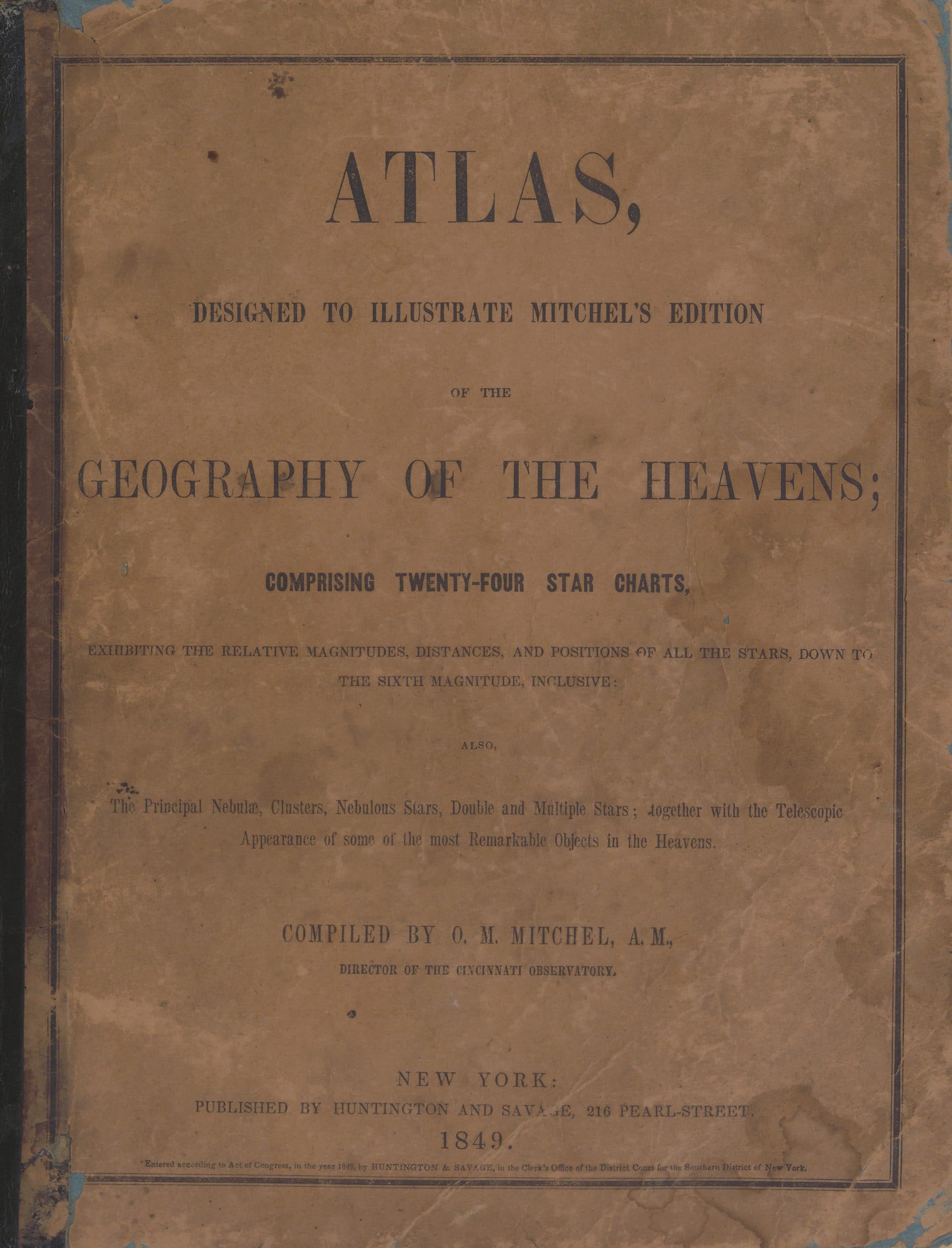
Dodecahedrons and icosahedrons embody the golden ratio in their dimensions and positioning of intersecting lines. In geometry, a golden spiral is a spiral whose increase reflects the golden ratio (approximately 1.618) as the spiral expands incrementally.
The divine ratio presents itself in nature, from the patterning of seeds in some sunflowers to the dimensions of the arms of certain spiral galaxies, such as those seen in Atlas: A Geography of the Heavens, available to view at the Downtown Main Library.
Euclid's Elements
Pacioli’s text confirms and expands upon Euclid’s formula, detailing how the golden ratio appears in geometric solids such as cubes, prisms, and other polyhedrons while proposing that the proportion itself reflects harmonic design when found in nature, art, and architecture.
Da Vinci’s illustrations not only apply the proportion, but do so by using a method and perspective that had never been done before. Part of da Vinci’s genius was that he could visualize the shapes in his mind as three-dimensional objects, then translate them to the page. In addition to solid drawings of the shapes, he also provides a corresponding “vacua” or hollow version, constructed as if made of wooden beams. The empty faces enable one to see through to the rear surfaces, revealing which solid edges belong to the front and which to the back, thus making them more comprehensible.
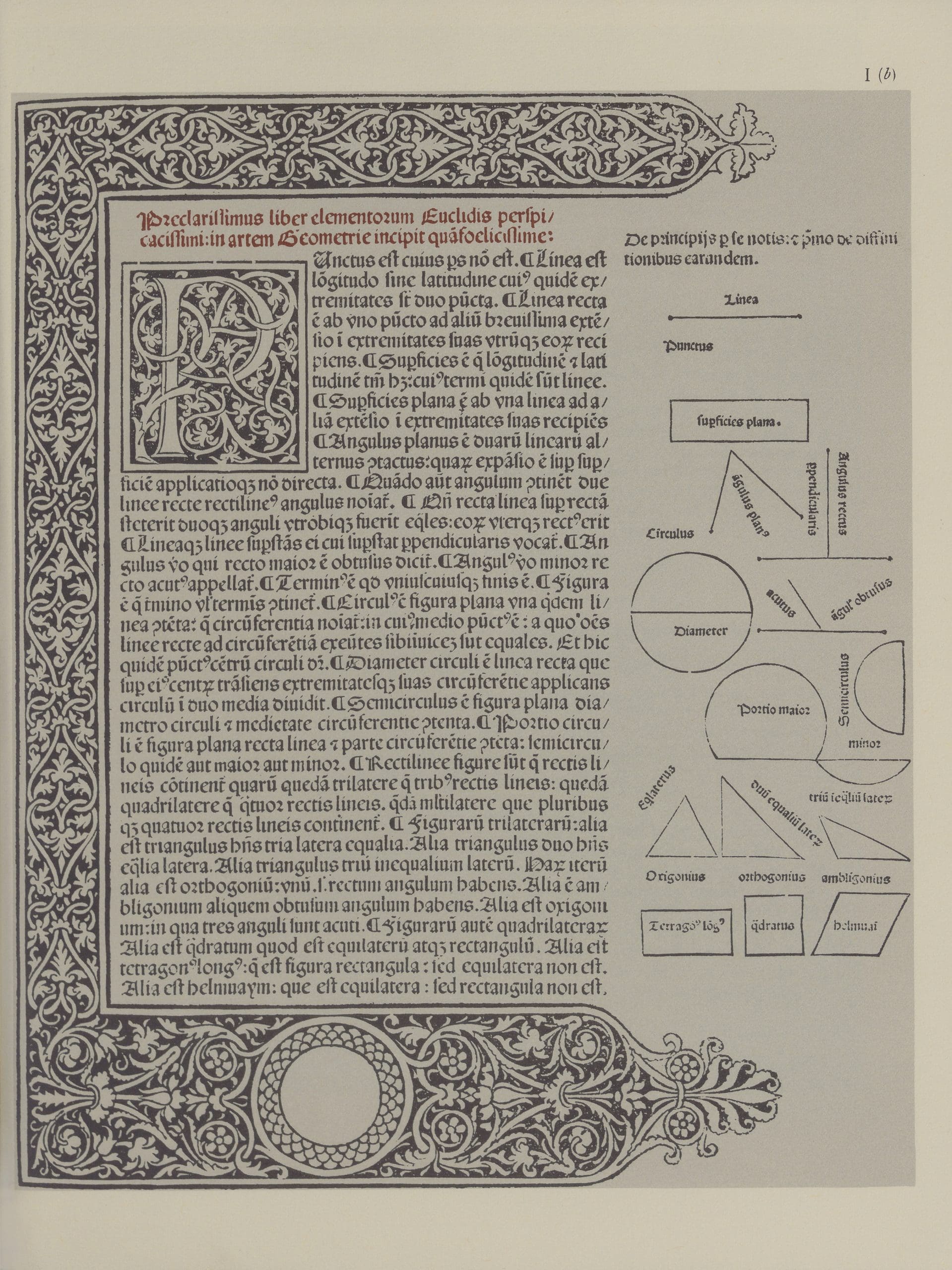

Dear Sir,
Benjamin Franklin (1706-1790) and Joseph Priestley (1733-1804) corresponded with one another on their various scientific experiments and discoveries for over twenty years.
The letters between Benjamin Franklin and Joseph Priestley reflect the tumultuous time during which they were written, spanning both the American and the French revolutions, and how these conflicts shaped and influenced their thinking and outlook.

The most significant collaboration between Benjamin Franklin and Joseph Priestley focused on Priestley’s work around different compositions of air. Priestley describes a series of experiments with mint sprigs in his book Experiments and Observations of Different Kinds of Air. His work leads him to the conclusion that plants fundamentally “mend” respirated air and restore its quality.

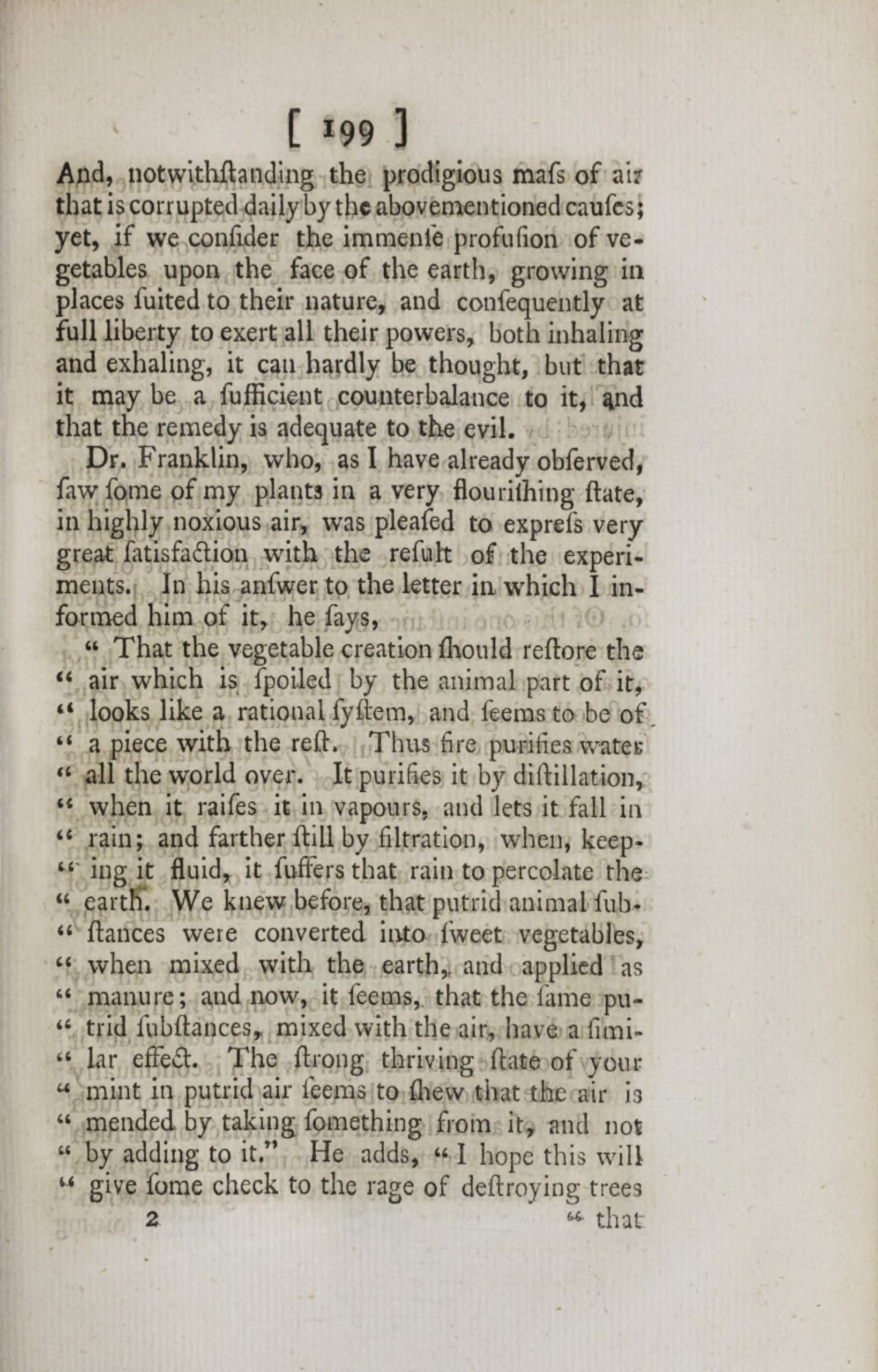
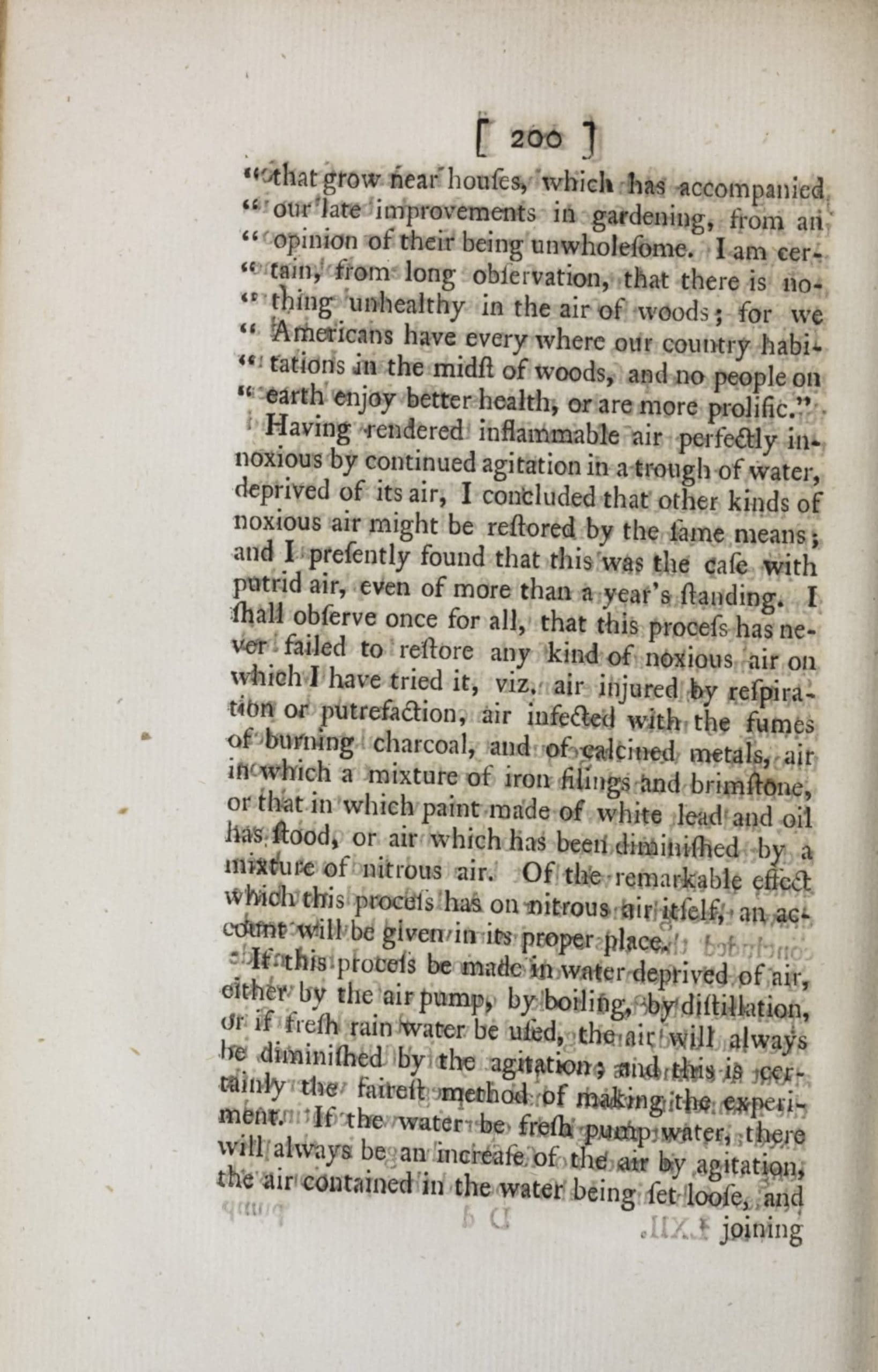
Pages from Experiments and Observations of Different Kinds of Air. Joseph Priestley. Birmingham. Pearson. 1790.
“Surrounding houses too closely with planting, or thick woods, likewise tends to render the air unwholesome. Wood not only obstructs the free current of the air, but sends forth great quantities of moist exhalations which render it constantly damp. Wood is very agreeable at the proper distance from the house but should never be planted too near it, especially in a flat country...” - William Buchan M.D.
Popular in England at the time, a book written by William Buchan M.D. called Domestic Medicine: or a Treatise on the Prevention and Cure of Diseases by Regiment and Simple Medicines instructed people to cut down trees close to their homes because they rendered the air "noxious." After learning of Priestley's experiments, Franklin's letters target the fallacy present in Buchan's book and urge the importance of immediate change in human behavior.

Pierre Curie

Marie Curie
Marie and Pierre had two daughters, Irene and Eve. This diary entry reflects how the dailiness of their domestic life existed alongside their work of scientific discovery.

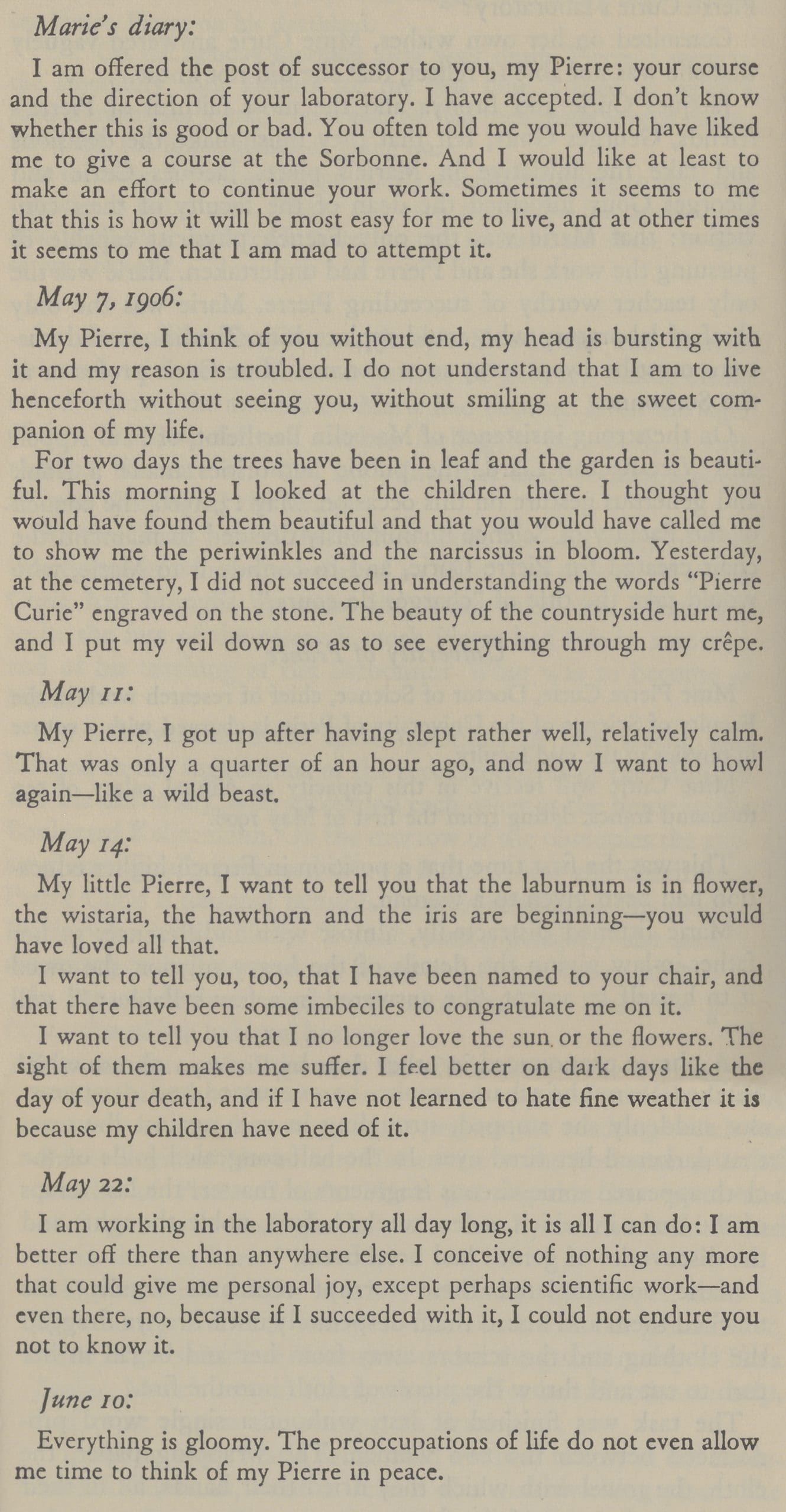
In 1906 Pierre Curie was killed when he accidentally stepped in front of a horse-drawn wagon. In her diary entries, Marie conveys her personal anguish over Pierre’s death, and her deep professional commitment to continuing their work.
On May 13, 1906, Marie was appointed to the professorship at the Sorbonne left vacant by Pierre’s death. She would become the first woman professor in the Sorbonne’s 650-year history.


